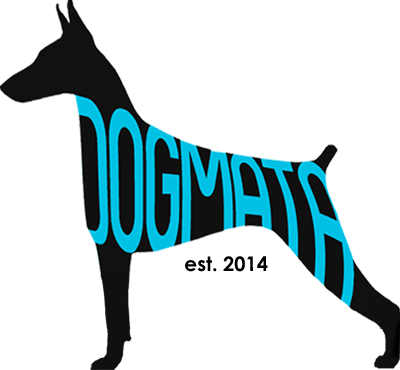Unfortunately, this is not always the case. Although mastering basic commands (sit, stay, down, come, etc) is a great foundation for balance, it is not a guarantee of good behavior, but only the beginning.
I have come across many well trained dogs that still exhibit behavioral issues. These dogs are able to perform tricks such as sit, shake hands, fetch etc, but still chew up shoes or furniture, bark non-stop or pull on a walk.
Training is not supposed to teach a dog to perform a specific task when given a specific stimulus. Instead it is a process of associating a word with a behavior. The most common form of training, which we practice here at Dogmata, is positive reinforcement. If a dog responds to our command it gets a treat, but if it is exhibiting inappropriate behavior it receives a correction.
Most dogs will do anything for a food reward, with enough repetition it is even possible to perform a trick without a food reward. What this kind of ‘training’ does not do is solve behavioral issues. I’m sure many of you have had the experience of calling your dog to come to you - a command you have trained them to do, but the dog ignores you because it sees a squirrel, another dog, or a leaf blow by. In these cases the training completely ceases to be effective.
To rehabilitate a dog, it must first be determined what it is in the dog’s environment that is the cause of the misbehavior. Is the dog bored, frustrated, over excited, fearful? If these issues are not addressed, a well trained dog that will sit on command will still focus on the element in the environment causing the misbehavior. The major factor in a dog’s environment that may trigger a negative behavior is the energy of the humans around it. Our dogs give back to us the energy we give to them. Human love is an emotion, not a behavior, and to the dog it is frequently seen as a negative behavior. Our dogs are our mirrors, they reflect back to us the energy we give them. This is why I technically train humans and rehabilitate dogs. It easy to show humans how their energy is affecting their dog, and how by changing the negative energy the desired behavior in the dog may be achieved. Balance! We also provide humans with the knowledge needed to understand what is lacking in their dog in order to fulfill the dog's need. It is then, and only then, that the dog may be brought to a calm and submissive state. So, what are the five poor decisions humans make that contribute to a dog’s bad behavior?
Number One: Reinforcing bad behavior. If your dog is barking or whining for attention, how do you respond? If you tell him ‘stop’, 'no', or you pet him while telling him ‘everything is ok’ - you just rewarded the behavior. To a dog, human words are a reward, dogs do not ‘talk’ to each other in the same way as humans. Instead, provide an opportunity for him to succeed. For example; if he is begging, move him to a different location, put him in a down then reward with a treat. When you see he’s about to move from his down, stop, correct, then reward. It may take a few repetitions, but dogs are smarter than you think, he will get it! You, and everyone else in the house must be consistent!
Number Two: Failing to advance training. If you stop your training after he’s learned to sit, down, stay, and come indoors, you will face issues. It’s time to up the ante. Introduce new commands and practice the old ones in new environments like at the dog park. Just because your dog listens well to you inside your house, doesn't necessarily mean he will in a new location. By providing such advanced training, the dog is given mental exercise, which is just as, if not more important than physical exercise.
Number Three: Lack of physical exercise. If you are gone eight to ten hours a day and your dog’s walk consists of a quick dash around the block, you are failing to provide adequate exercise. Even if you have two acres of fenced back yard for your dog to run in, without structured exercise you are not providing your dog the opportunity to fully expend his energy. If the full quota of structured exercise for both the mind and body is not met, the excess energy will be directed into behaviors such as; digging, chewing, scratching walls, counter surfing etc.
Number Four: You don’t really know your breed. This goes hand in hand with number three. If you have a german shepherd who is terrorizing your home, but you walk him in the morning and again at night, you might think you’re giving him enough exercise, but you’d be wrong! While a twice daily walk may work for a mastiff or a bulldog, it will not suffice for a dog that was bred to work from sunrise to sunset. This dog was intended to ‘have a job’, and more importantly - it wants one. If your energy level is a four out of ten you must get a breed that matches you. This is possibly one of the most common mistakes humans make when getting a dog.
Number Five: You’re dealing with an adolescent. This is not really your fault, but by not recognizing it or responding to it, can make a huge difference in your dog’s behavior. Similarly to humans, dogs may go through a ‘rebellious teenage’ phase (anywhere from five to eighteen months depending on the breed). During this time they will often test their owners, seeing what they can get away with. Be firm and consistent with training, continue establishing rules, boundaries, and limitations. Most important - be calm and assertive.
